
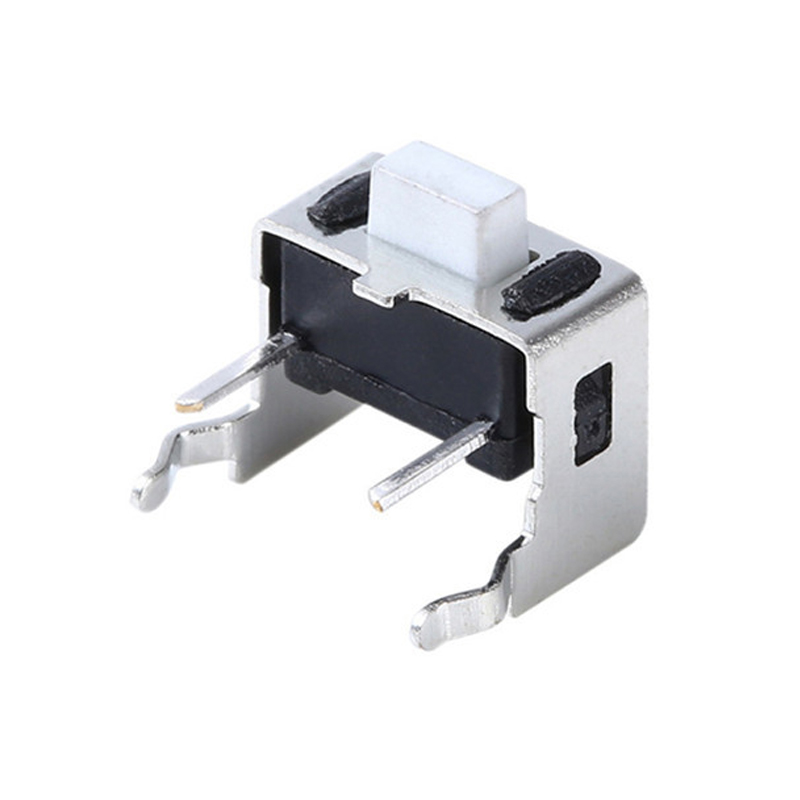

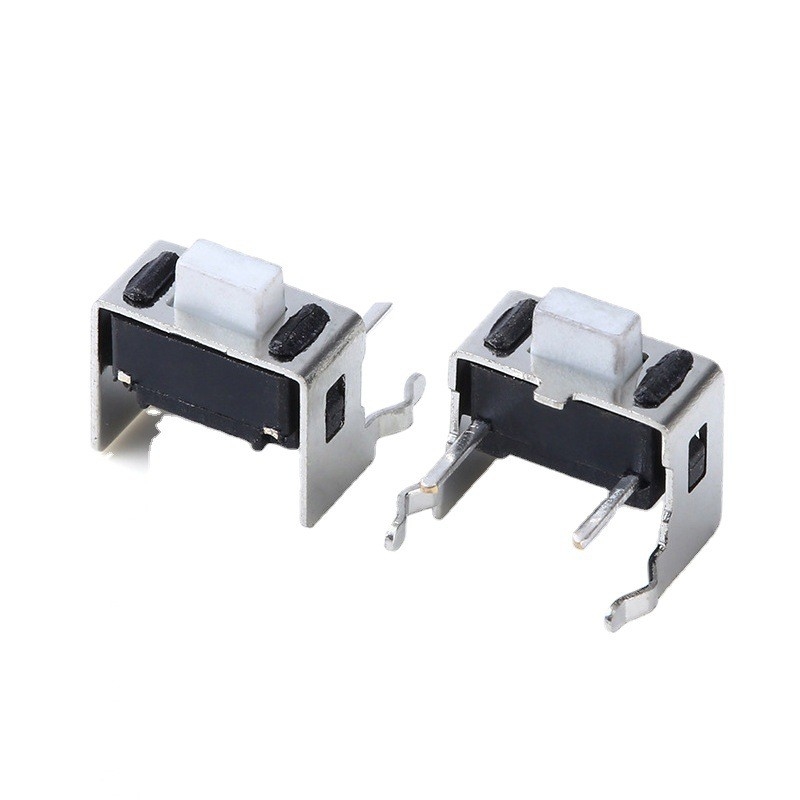
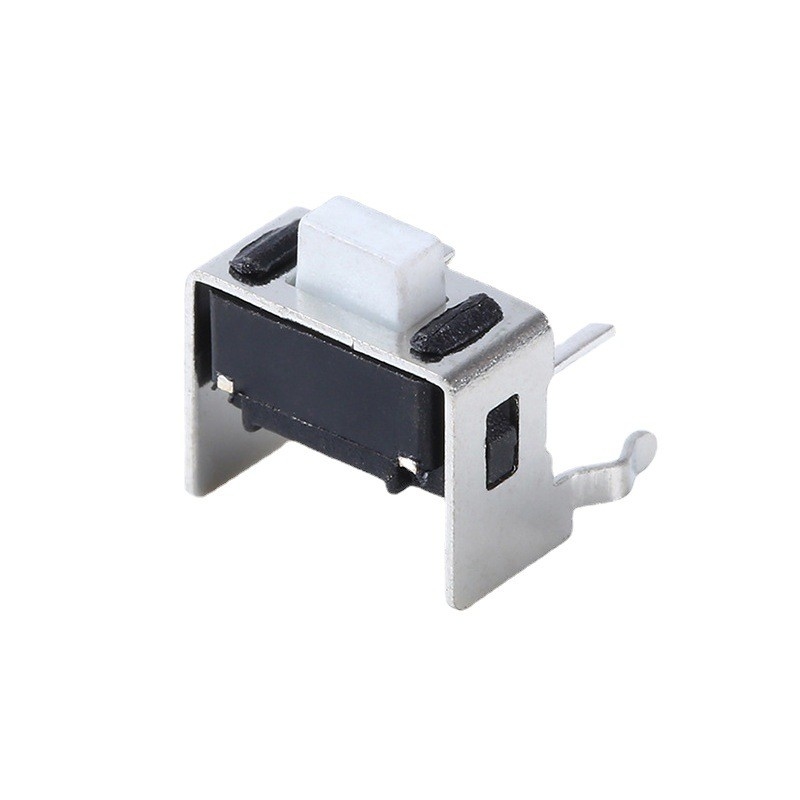
The 3x6 Tact Switch With Bracket is a modular input device, perfect for custom control panels and DIY electronics. It features a sturdy mounting bracket. Tact Switch provides a satisfying tactile "click" feedback and a distinct electrical signal upon press. This self-contained unit simplifies wiring and installation for projects like arcade controllers, sim racing rigs, industrial control systems, and MIDI interfaces. It offers a reliable and organized solution for creating complex, multi-button input interfaces.
Plastic: The housings and brackets of light-touch switches are usually made of plastic materials, such as ABS, PC, PA, LCP (Liquid Crystal Polymer), etc. These plastic materials are lightweight, smooth, cost-effective, and easy to process and mold. These plastic materials have the characteristics of light weight, smooth surface, low cost and easy to process and mold. Among them, ABS plastic has good toughness and mechanical strength, PC plastic is highly transparent and flame retardant, while LCP has excellent heat resistance and electrical properties.
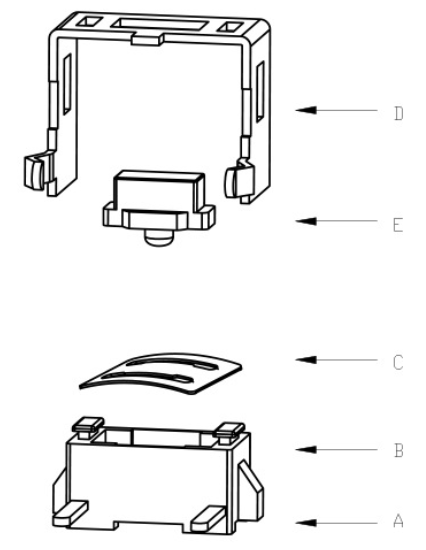
Metal: In some high-end or special application scenarios, the housings and brackets of flick switches may also be made of metal materials, such as stainless steel and aluminum alloy. The metal shell has better heat dissipation, mechanical strength and aesthetics, especially suitable for dustproof, waterproof level of higher requirements of the occasion.
Pure silver/silver alloy: As the core component of the light-contact switch, the choice of material is crucial. Pure silver has excellent electrical conductivity, but weak resistance to sulfidation, easy to form silver sulfide affects the conductive properties. Therefore, many manufacturers will choose silver alloy as the contact material to improve its conductivity and corrosion resistance. Silver alloy contacts have the advantages of low resistance, abrasion-resistant texture, high melting point and oxidation resistance.
Copper and its alloys: In addition to contacts, there are other conductive parts involved inside the flick switch, such as conductive sheets, pins, etc. These parts are usually made of copper and its alloys. These parts are usually made of copper and its alloys due to their good electrical conductivity, mechanical strength and corrosion resistance. In some cases, the surface of these parts will also be gold-plated or silver-plated treatment to improve its conductivity and corrosion resistance.
Stainless steel: The short trigger stroke of the light-touch switch requires the internal spring and shrapnel to have sufficient elasticity and recovery force. Stainless steel has become the preferred material for the internal spring and shrapnel of the tap changer due to its excellent corrosion resistance and stability.
Phosphor bronze and other alloy materials: In addition to stainless steel, phosphor bronze and other alloy materials are also used in some specific applications of the light touch switch because of its good elasticity and conductivity.
The cover plate of the light-contact switch is usually made of metal materials, such as brass, etc. The main function of the cover plate is to protect the contacts. The main role of the cover is to protect the contacts and internal components from the influence of the external environment, and play a certain role in decoration.
The pushbutton part is usually made of the same plastic material as the shell to ensure the consistency of its appearance and the comfort of its hand feeling. In some cases, the surface of the buttons will also undergo special treatment, such as non-slip, wear-resistant and so on.
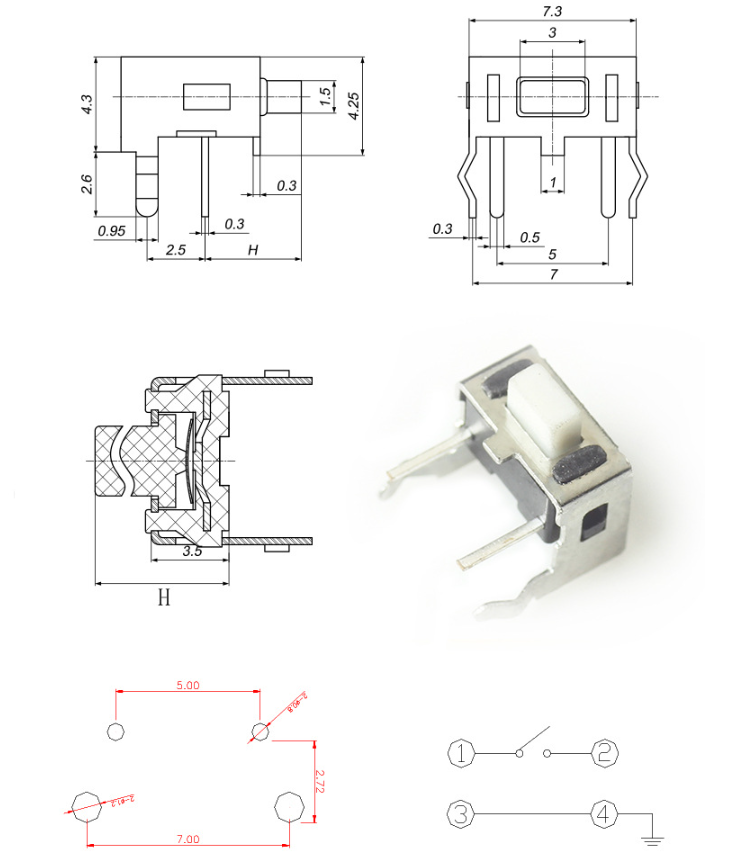
Thanks to its compact size, easy operation and stable performance, the 3*6 tact switch with bracket is widely used in multiple fields. Here are the main application scenarios:
Mobile phones: Used as side keys (e.g., volume control keys, power buttons) for convenient operation, with a small size that doesn’t take up much space.
Remote controls: Common in TV remotes, air conditioner remotes, etc., serving as control buttons for various functions with clear tactile feedback.
Smart watches: Applied as side buttons for smart watches to realize power on/off, mode switching, function selection, etc., adapting to the compact internal space of watches.
Bluetooth earbud charging cases: Used as lid-open detection switches or function switching buttons, with a compact size facilitating layout in limited space.
Portable monitors: Used for parameter setting, mode switching, operation confirmation, etc., whose reliable performance and small size meet the requirements of medical equipment for components.
Blood glucose meters: Served as power buttons, function selection keys or confirmation keys to help users operate the instrument conveniently for blood glucose testing.
Electronic thermometers: Applicable for switching measurement modes, power on/off, etc., with a compact design suitable for integration into small thermometers.
Human-Machine Interface (HMI) devices: Used as buttons on operation panels to control industrial equipment and set parameters, with stable performance enabling reliable work in industrial environments.
Handheld testing instruments: Such as portable pH detectors, temperature detectors, etc., facilitating operators to perform quick operations and function switching on-site.
Automotive interior controls: Used for car seat adjustment buttons, window control buttons, air conditioning control panels, etc., providing comfortable operating feel and reliable performance.
Automotive electronic modules: Such as automotive body control modules for controlling vehicle lights, door locks, etc., the miniaturized switch helps save interior space.
Smart switch panels: Acting as buttons for smart switches to control lights, electrical appliances, etc., with multiple installation methods adapting to different circuit board designs.
Smart small home appliances: Such as volume control keys for smart speakers, mode switching keys for smart humidifiers, etc., providing users with convenient operation methods.
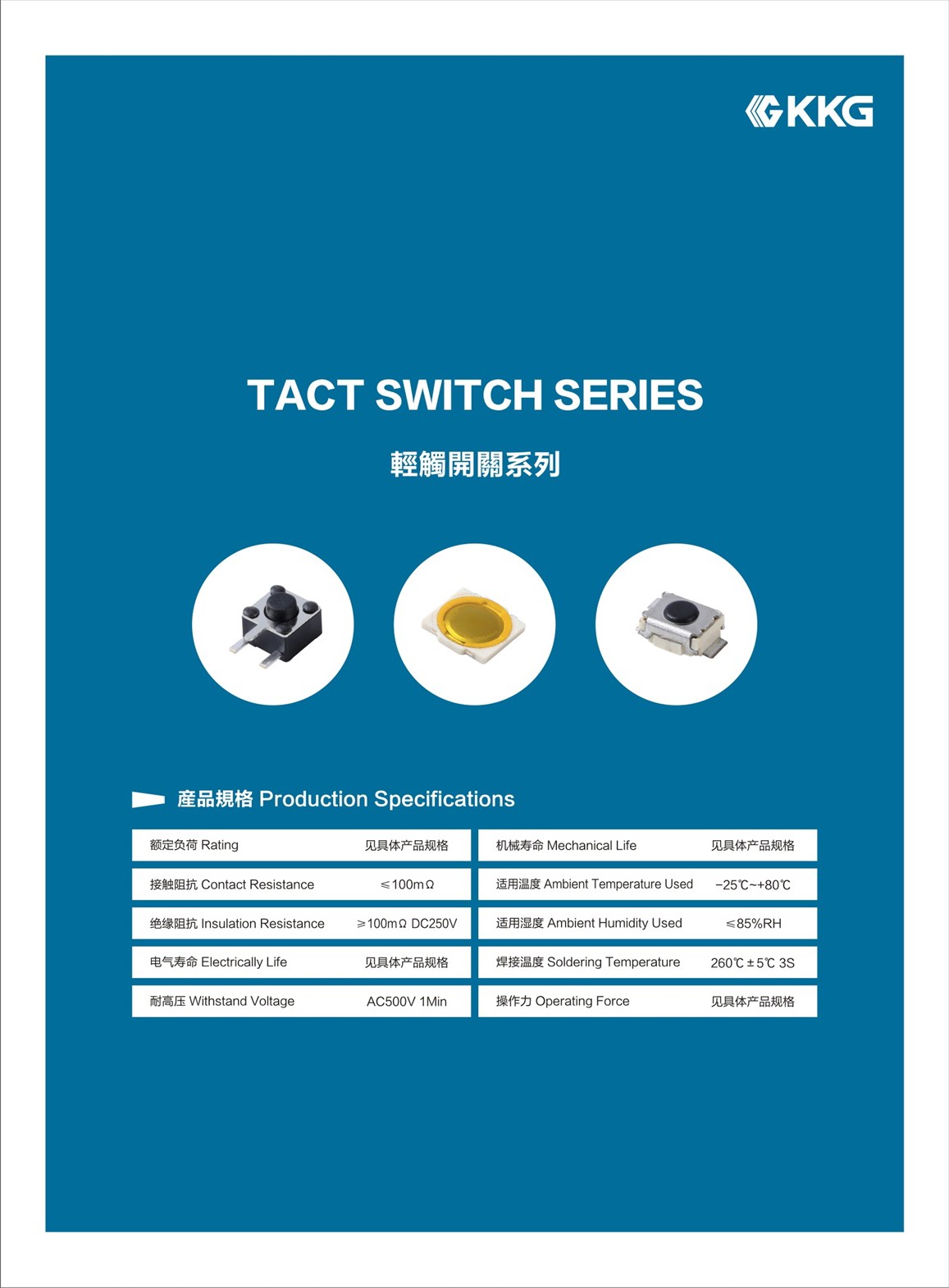
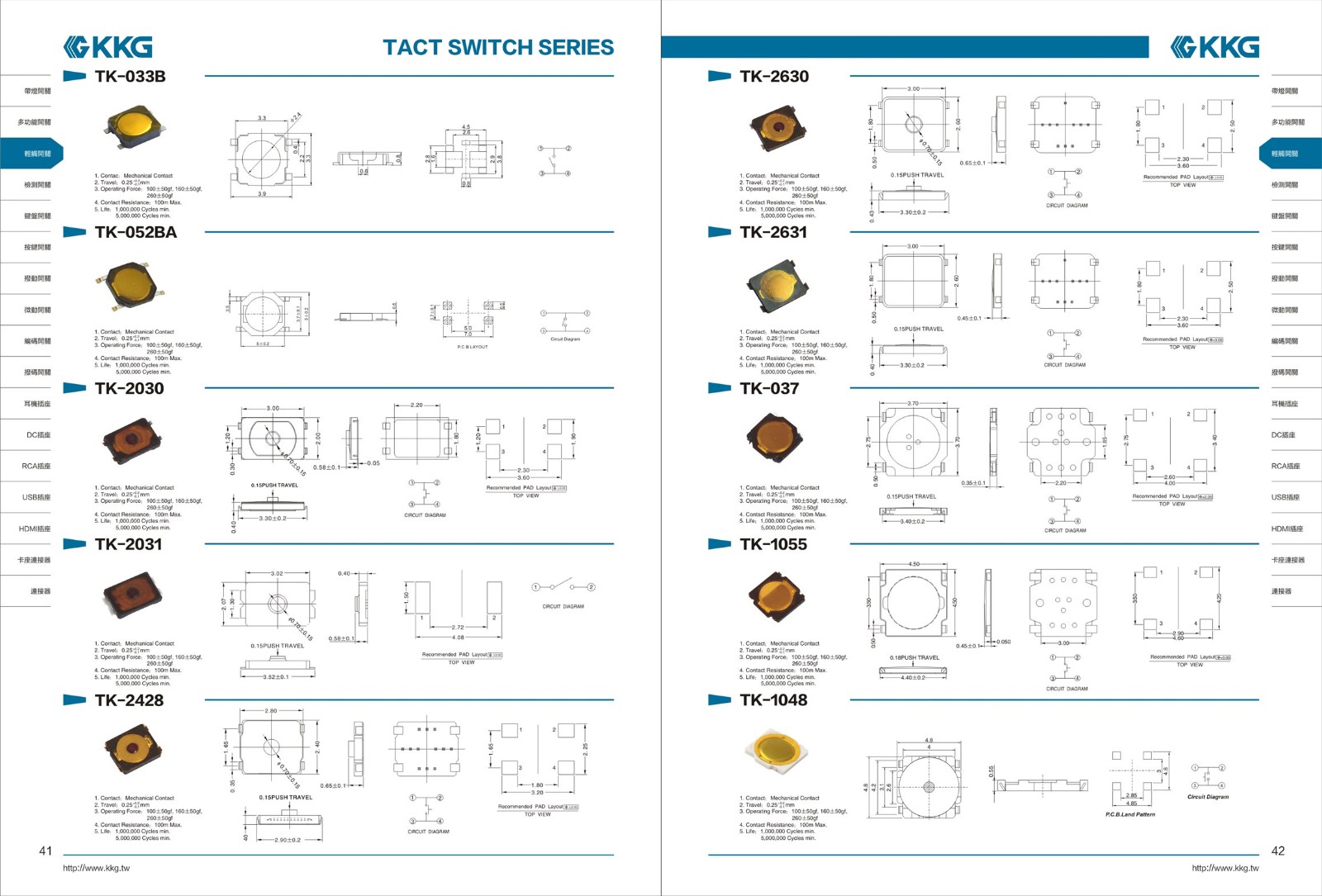
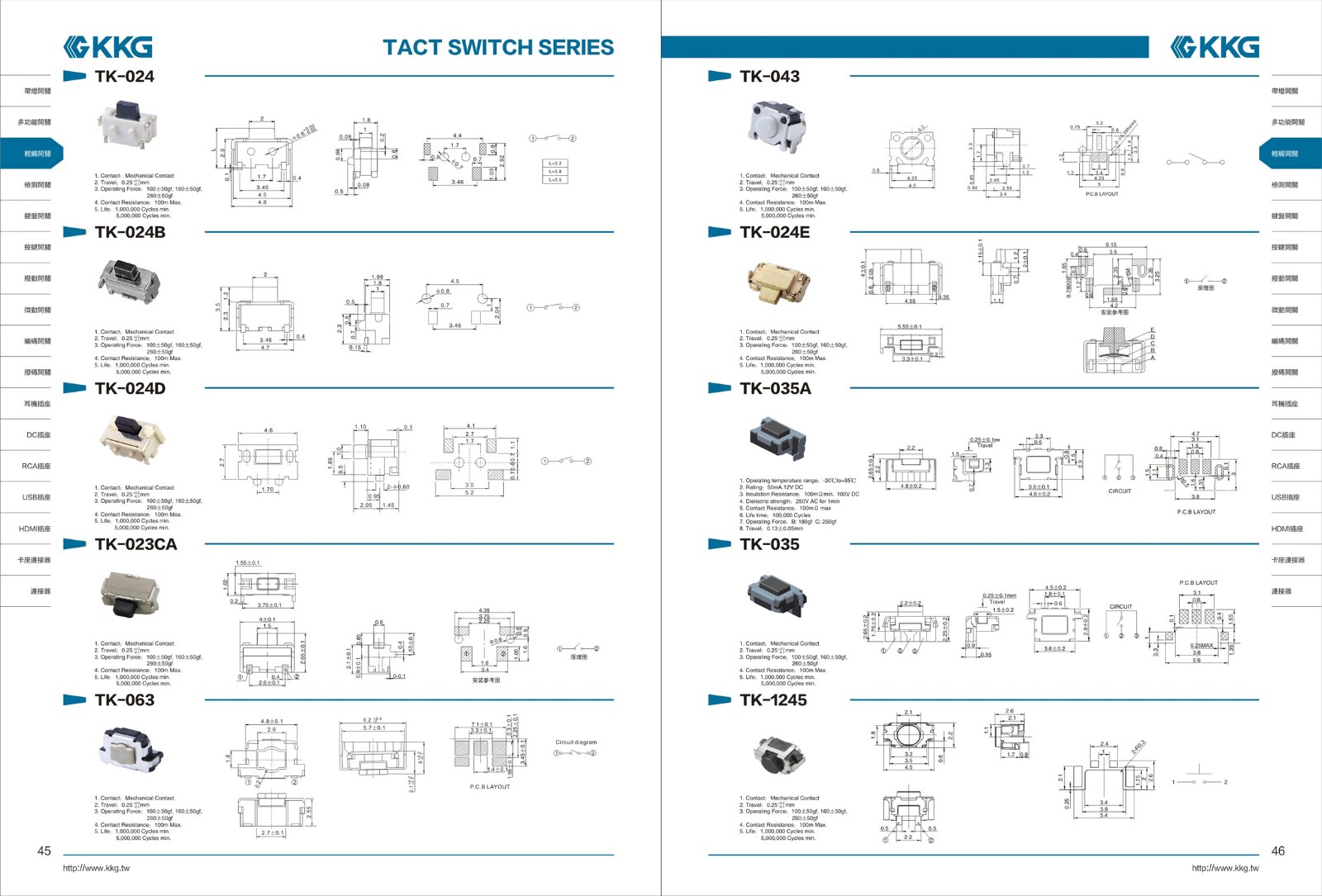
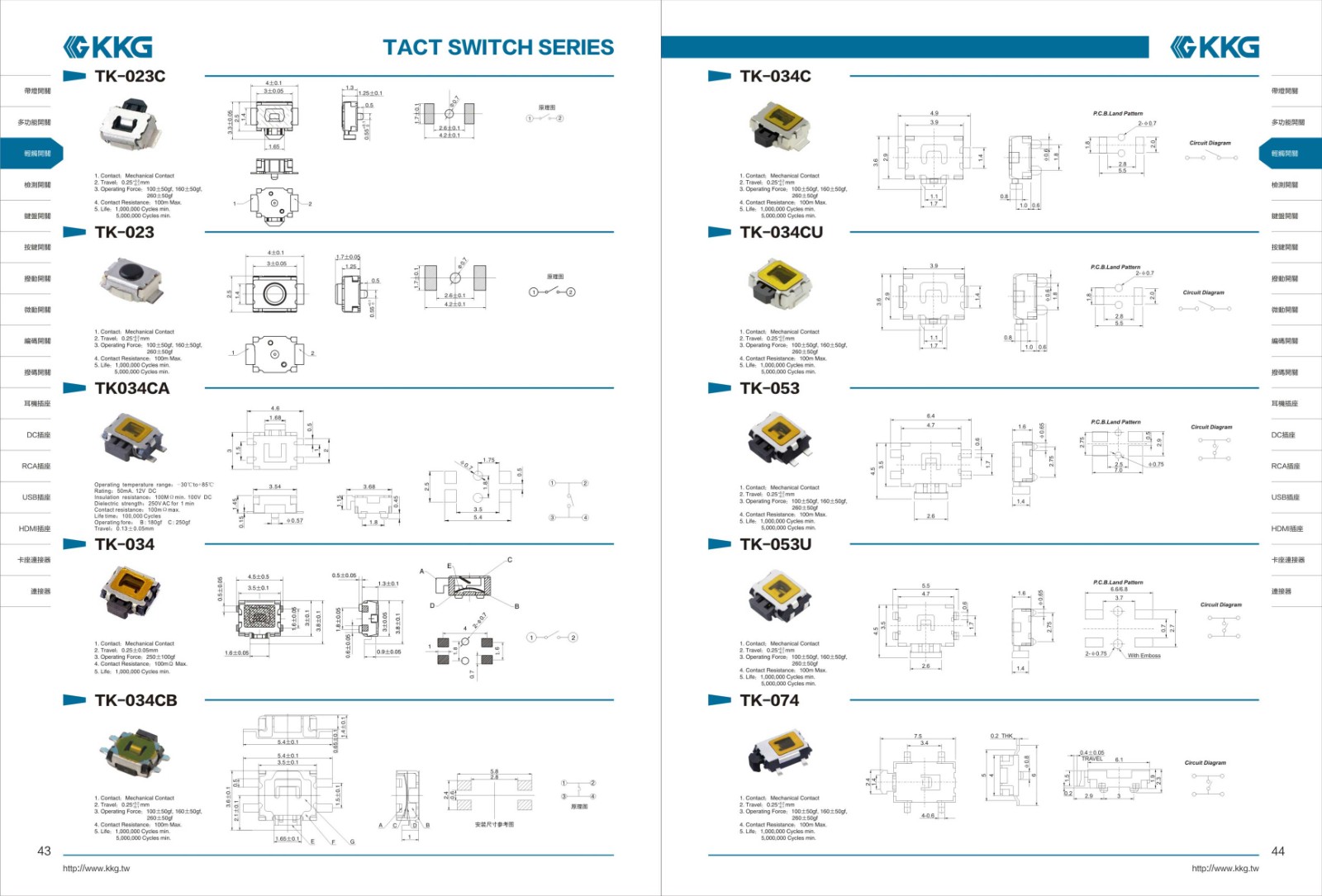



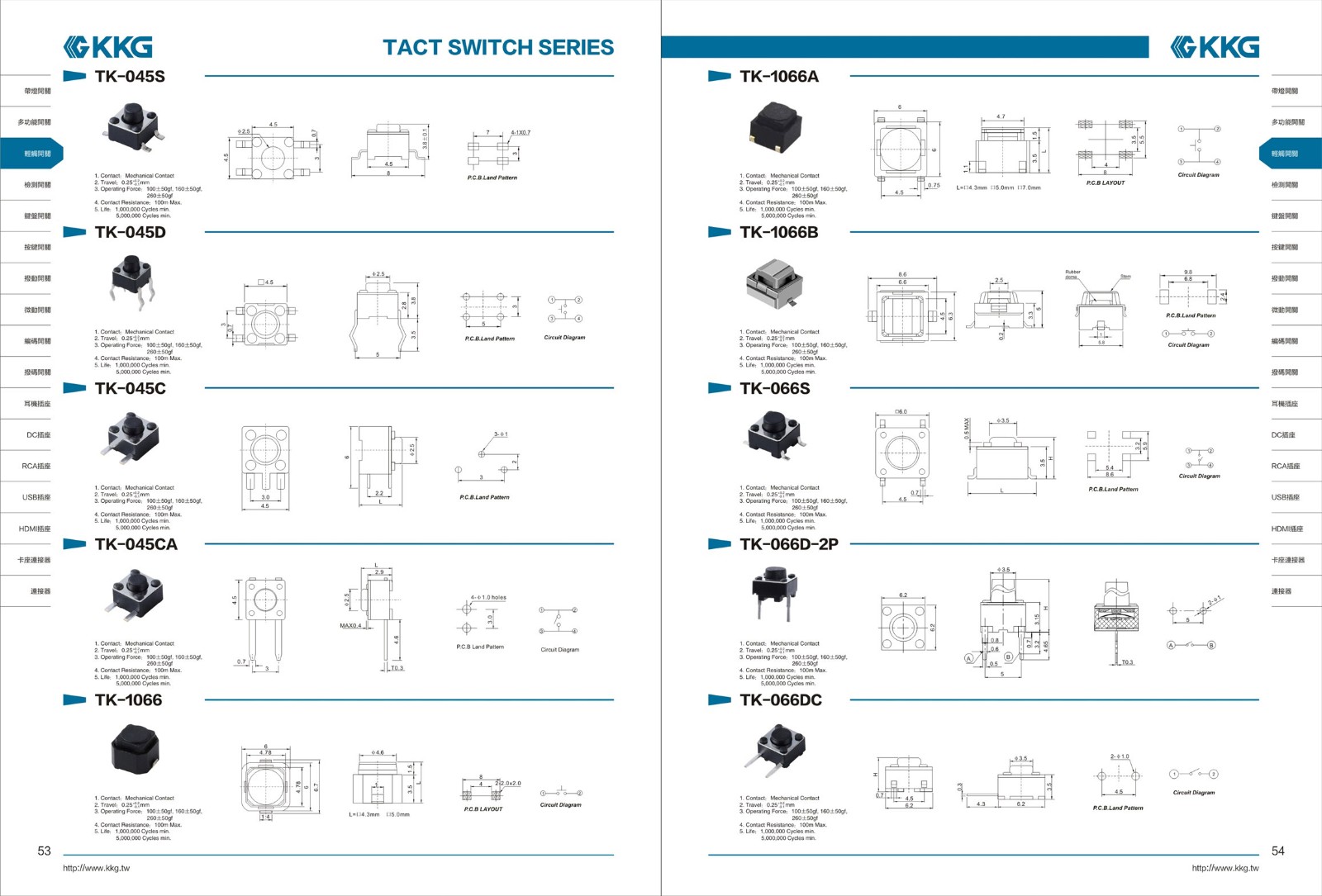
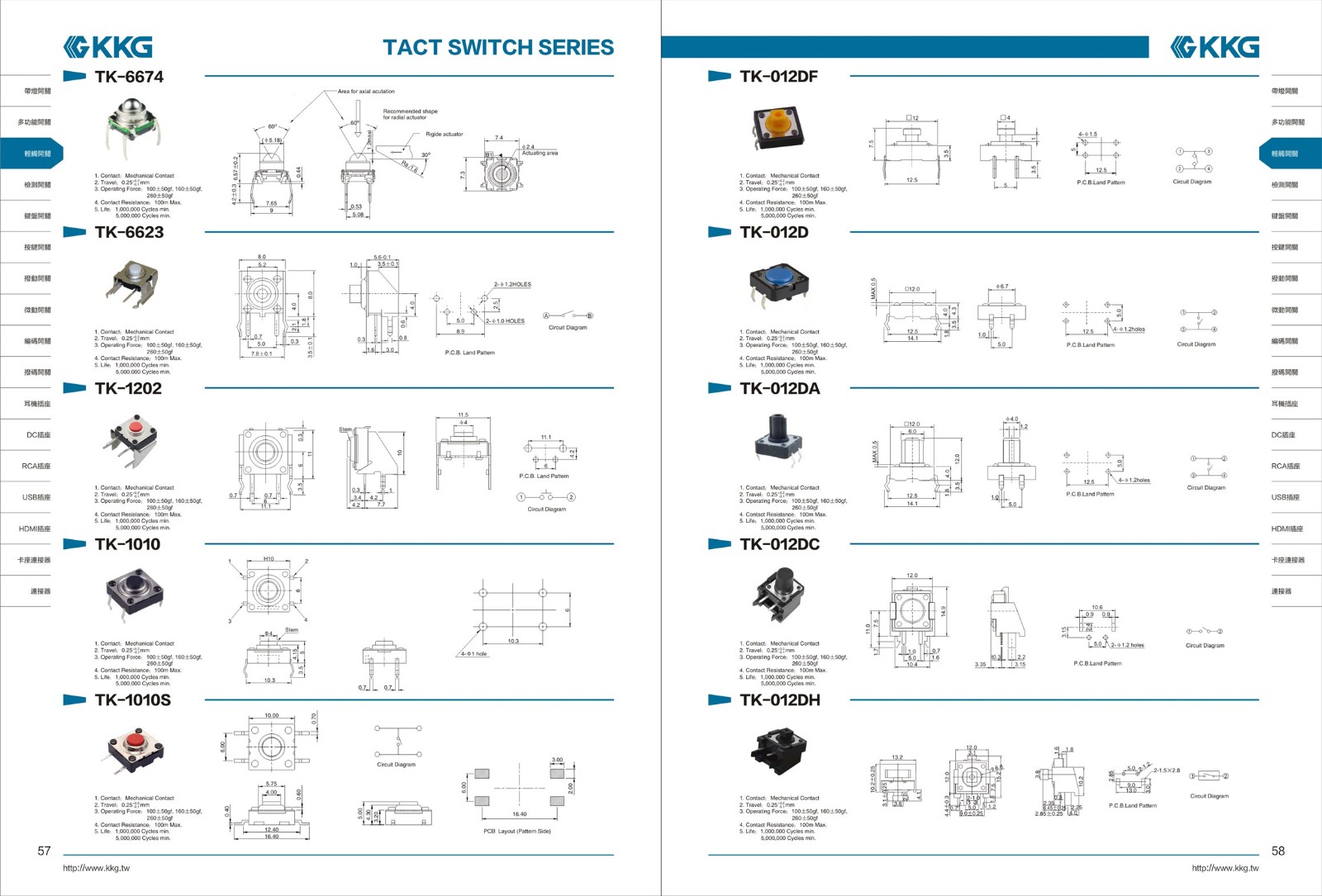
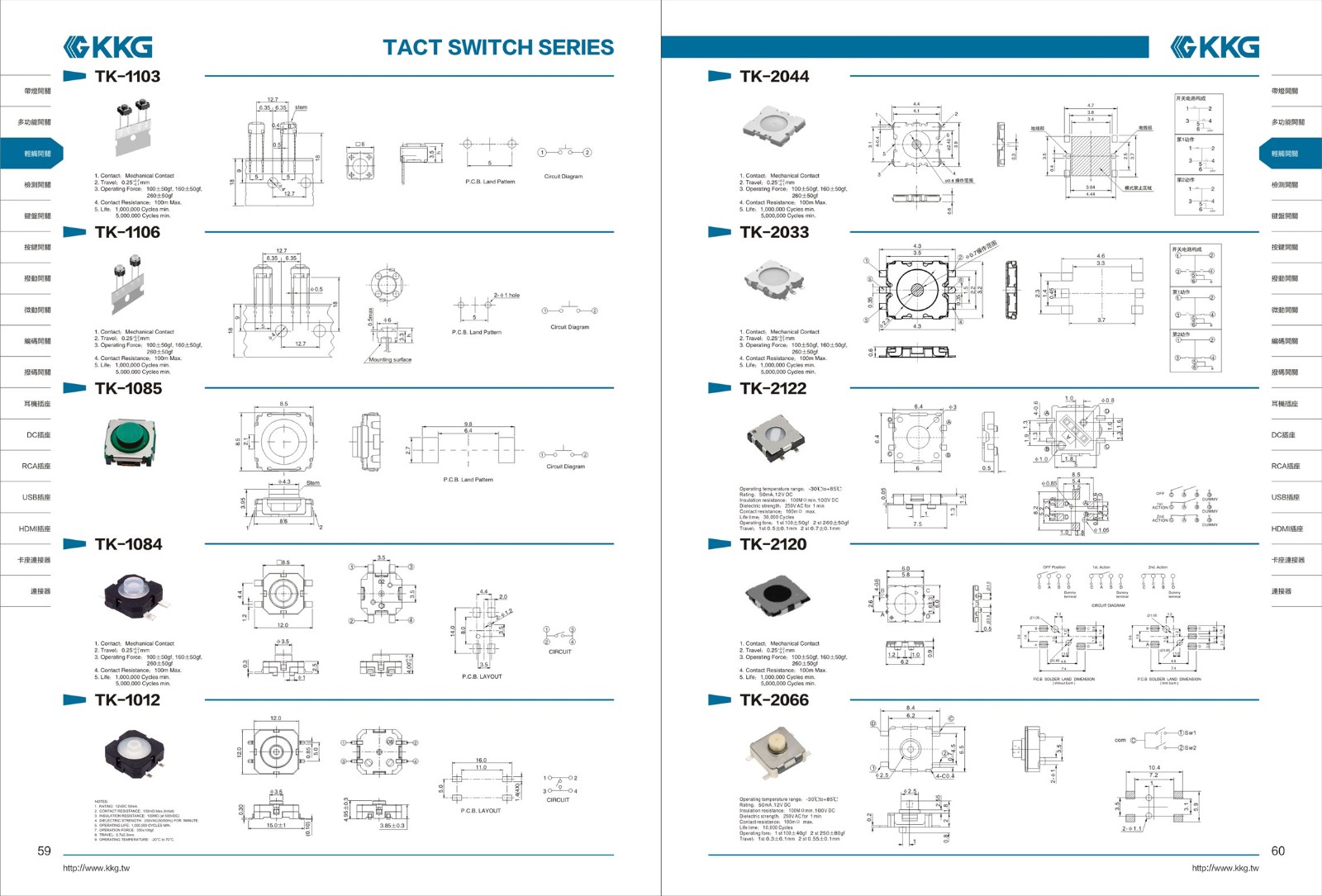

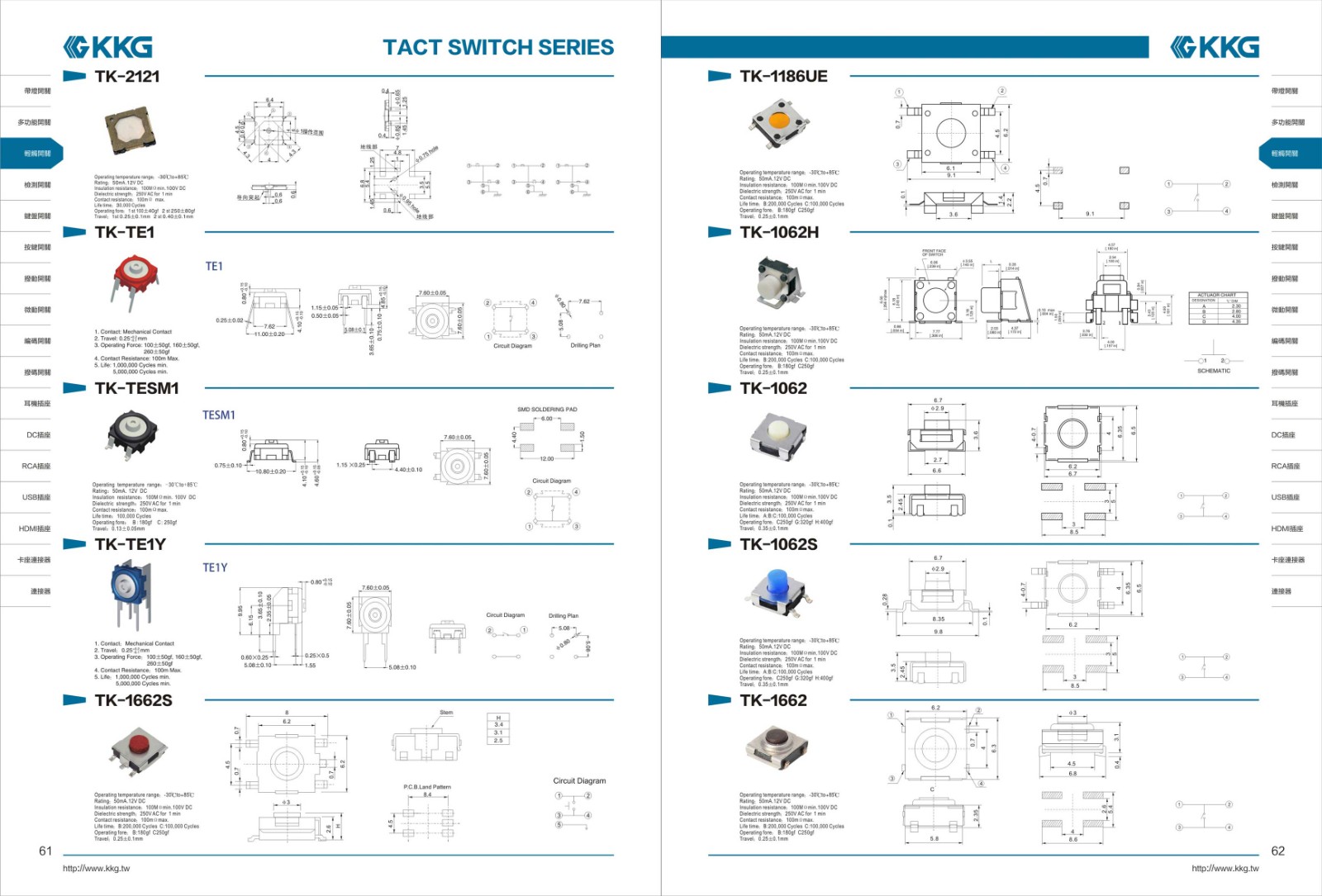
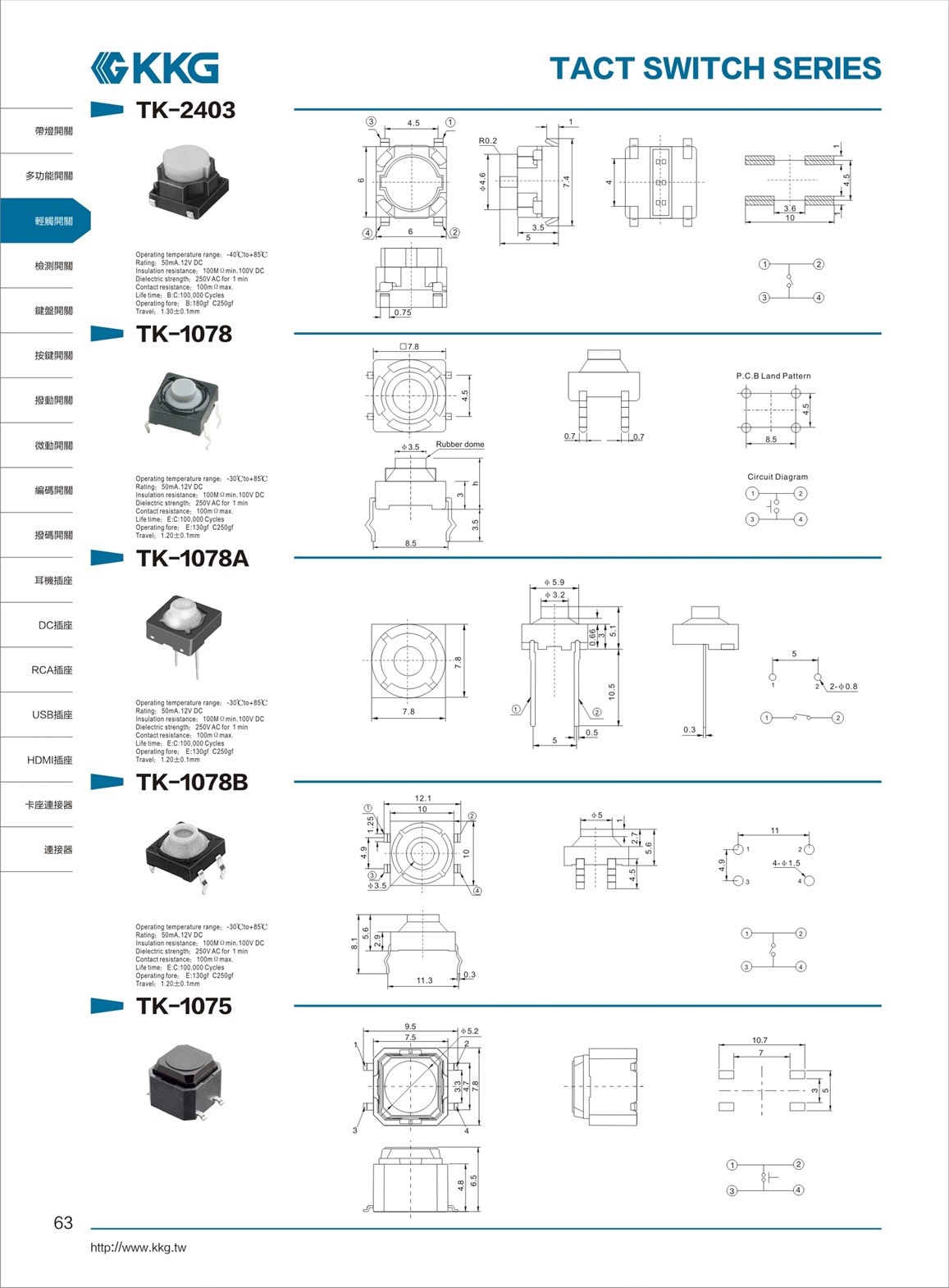
Common problems of the 3*6 tact switch with bracket focus on contact performance, installation, durability and environmental adaptability.
Poor contact/signal interruption: Mostly caused by pin oxidation, shrapnel deformation or foreign objects entering the switch interior, especially prone to occur in humid environments or after long-term use.
Conduction delay/no response: May result from insufficient operating force (failure to reach the switch’s rated trigger force) or shrapnel fatigue and loss of elasticity.
Pin cold solder joint: Excessively high soldering temperature (over 260℃) or prolonged soldering time (over 3 seconds) will lead to unstable connection between pins and PCB board, causing contact problems.
Button jamming/failure to rebound: Usually due to uneven force on the bracket during installation, foreign objects jamming the shrapnel, or excessive friction caused by too small a gap between the button and the shell.
Bracket loosening/falling off: Insufficient strength of the bracket material, or excessive screw torque during installation, or unfastened buckles, which affect the stability of the switch fixation.
Reduced stroke/weakened tactile feedback: Shrapnel wear after long-term high-frequency pressing, or wear on the top of the button, leading to a decrease in trigger stroke and feedback tactile sensation.
Failure of waterproof and dustproof functions: Non-waterproof models exposed to humid and dusty environments will have water vapor or dust enter the interior, corroding the shrapnel and causing short circuits.
Abnormal performance at high/low temperatures: Extreme temperatures (below -20℃ or above +70℃) will cause changes in shrapnel elasticity and deformation of the shell material, affecting the normal operation of the switch.
False triggering in vibrating environments: In vibrating scenarios such as automobiles and industrial equipment, if the bracket is not firmly fixed, the switch may be falsely pressed by vibration.
Premature failure: Failure to match the switch’s rated service life (usually 50,000-100,000 cycles), over-frequency use or excessive operating force (exceeding 1.5 times the rated operating force) will accelerate the wear of shrapnel and contacts.
Contact ablation: Lack of a current-limiting resistor in the circuit leads to instantaneous large current passing through the contacts, resulting in contact oxidation and ablation, which affects conduction performance.
Previous: 2P 3*6 Tact Switch

Tel:
Add:
Rixing Industrial Zone,Tangxia Town, Dongguan City, Guangdong Province, China
Copyright © 2025 KKG ELECTRONICS ELECTRIC Co., LTD. All rights reserved
Privacy policy Cookie tracking